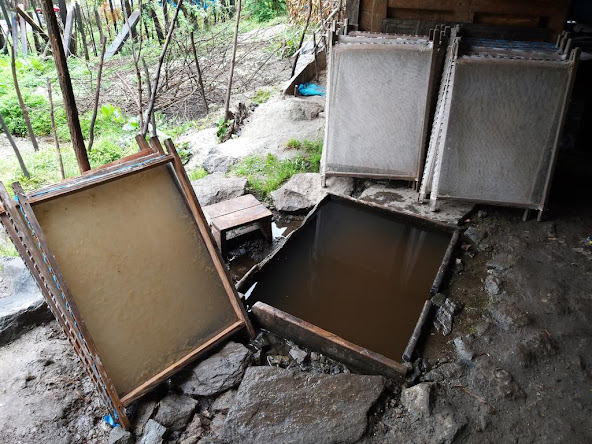Mon Shugu is not just paper — it is a piece of living history. Traditionally made from the bark of the Shugu Sheng tree (Daphne papyracea), which grows abundantly in the forests of Tawang, the paper was renowned for its durability, strength, and spiritual significance. It was once a household industry in the region, and its quality led to its export to neighboring Bhutan, Tibet, Japan, and Thailand. However, with the advent of cheaper mass-produced alternatives, especially from China, this sacred art form began to wane, nearly disappearing by the end of the 20th century.
Efforts to revive the dying craft began as early as 1994, but Tawang’s geographical challenges — its high altitude, treacherous terrain, and harsh climate — made it difficult to sustain such initiatives. Transporting raw materials and machinery to the remote hills was a logistical nightmare. Yet, the commitment to protect this cultural treasure never died out. The real breakthrough came with the support of the Khadi and Village Industries Commission (KVIC) under the Government of India. In collaboration with the Kumarappa National Handmade Paper Institute (KNHPI), Jaipur, a team of experts and artisans laid the groundwork to bring this traditional art back to life.
After months of intensive planning and training, a fully operational Monpa Handmade Paper unit was established in Tawang. This marked the rebirth of a forgotten craft, empowering the local Monpa artisans and giving a fresh economic and cultural boost to the region. The paper is still made using time-honored techniques: bark from the Shugu Sheng tree is carefully harvested without harming the forest ecosystem, then boiled in natural alkaline solutions, beaten into pulp, and sun-dried into beautiful, textured sheets. No chemicals are used at any stage, making the process both environmentally sound and culturally authentic.
The revival of Monpa Handmade Paper aligns perfectly with the vision of “Local to Global” — an initiative aimed at promoting indigenous Indian products to international markets. The paper’s strength, biodegradability, and rich historical roots make it an ideal product for global consumers seeking sustainable and culturally meaningful alternatives. Today, the Monpa community is once again producing this paper not just for local use but for export, reviving trade links that had existed centuries ago.
What makes this initiative even more impactful is its contribution to environmental sustainability. Unlike conventional paper production, which often relies on deforestation and industrial chemicals, Monpa paper uses non-timber forest products (NTFPs), ensuring that local biodiversity remains intact. This model of sustainable development holds immense promise for other forest-rich regions of India where traditional knowledge can be paired with modern market access to create green livelihoods.
The economic ripple effects of this revival are already being felt. Jobs are being created not only for artisans but also in related sectors such as tourism, marketing, and logistics. The Monpa paper is attracting attention at cultural expos and handicraft fairs, and its story is inspiring a new generation to reconnect with their roots. As demand grows, so do opportunities for scaling up, partnering with eco-conscious brands, and creating new paper-based products such as eco-packaging, diaries, and art supplies.
Tawang’s success in reviving Monpa Handmade Paper is more than just a regional achievement — it is a national inspiration. It proves that traditional craftsmanship, when nurtured with modern support and infrastructure, can lead to inclusive, sustainable development. It offers a blueprint for other communities across India seeking to breathe life into their fading heritage.
In an era where environmental crises and cultural erosion often go hand in hand, the resurgence of Mon Shugu stands as a beacon of hope. It reminds us that in our ancient traditions lie the seeds of a greener, more respectful future. As the Monpa people reclaim their heritage, the world gets a chance to witness the harmony of nature, culture, and resilience — all etched into the delicate yet enduring fibers of handmade paper from the hills of Tawang.


